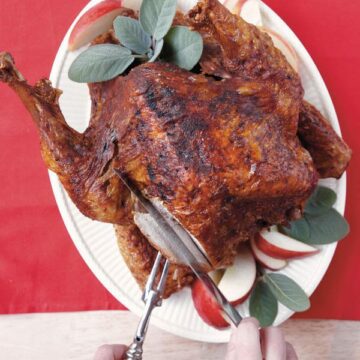Before we get started, don’t be intimidated by the word “Cajun” in reference to food. Many people have the mistaken impression that Cajun cooking is all about seeing how high you can get on the Scoville heat scale. That is inherently untrue. Although some dishes, like sauce piquante and boiled crawfish, will definitely leave your mouth tingly, the overwhelming majority of Cajun and Creole cooking is more about intense flavor versus intense heat, and that is especially true for fried turkey. When talking about a Cajun-style deep-fried turkey, the description is more about the cooking method than the seasoning. In fact, this blogger lives in south Louisiana and regularly fries turkeys for Thanksgiving or Christmas, and we like to try different flavor profiles. A family favorite is one we call the “Casian” Turkey (which is Cajun-fried, but marinated and rubbed with Asian flavors).
. . .
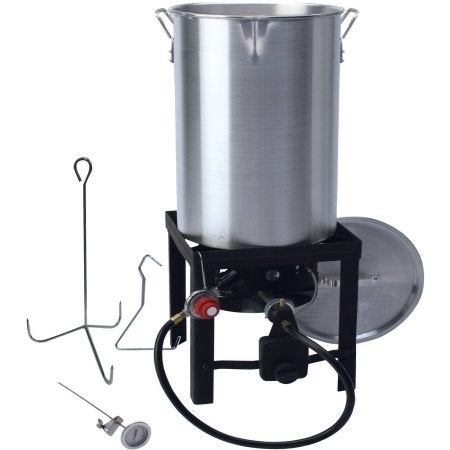
The Equipment
You will need to equip your outdoor kitchen with a 30-quart fryer, a propane burner, a meat thermometer, a turkey rack (which goes inside the bird), and a turkey lifter (which hooks to the rack to lift it). You can buy the full setup online from Academy, Walmart, or other big-box stores. Next you will need about 3 gallons of peanut oil, which is the best choice for frying turkey because it has a high flash point (less likely to catch fire), high smoke point (ensures good flavor), and can be used multiple times before disposal — in case you’re frying more than one. In Louisiana, neighbors often like to get together and take turns using the oil, especially since that much peanut oil can get pricey. Also, men love to cook when there’s danger involved, plus there’s an excuse to get together and drink a little beer. If you’re making an event out of it and frying multiple turkeys, you may need a little extra oil.
. . .
The Bird
Your turkey should be no more than 14 lbs. If you have a lot of people to feed, you can fry more than one and can even experiment with different flavor profiles for each. Make sure every turkey is completely thawed. This is very important. Frying a frozen turkey is VERY dangerous. The ice reacts with the hot oil in an explosive manner. Once thawed, a turkey is completely safe to fry. Just be sure to remove the neck and giblets from the inside of the turkey.
. . .
The Fill Line
Remember that the turkey will displace the oil when you place it into the fryer. Do not overfill the pot with oil. You want enough oil so that it will cover the bird once submerged, but not overflow the pot and catch on fire. Many turkey fryers come with a max fill line, but you can determine the exact amount you will need by placing your thawed turkey in the empty pot and filling it with water until the top of the turkey is barely covered. Remove the turkey, allowing the water to completely drain out of the turkey and back into the pot, then measure and mark the water line.
. . .
The Marinade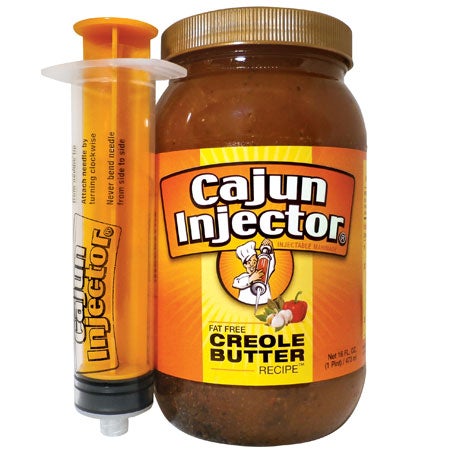
The flavor profile is completely up to you, but you will need to generously inject your marinade into the meat of the entire bird. The recommendation is 2 oz. of marinade per pound of meat. You can create your own marinade, or for a variety of marinade flavors that each come with an injector, visit the Cajun Injector website. For our “Casian” turkey, we add a little dry sherry to a basic teriyaki marinade.
. . .
The Rub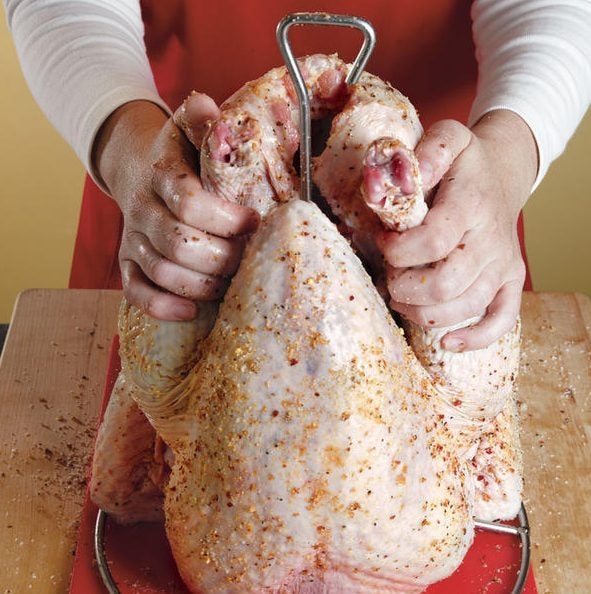
Insert the turkey rack through the cavity of the turkey (neck side down), pat the skin of the turkey dry with paper towels, then generously rub the bird with your favorite seasonings. For our “Casian” turkey, we make a rub with salt, pepper, garlic powder, ginger, and a little bit of curry powder. Too much curry will take over, but you can be generous with the garlic and ginger.
. . .
The Fun Part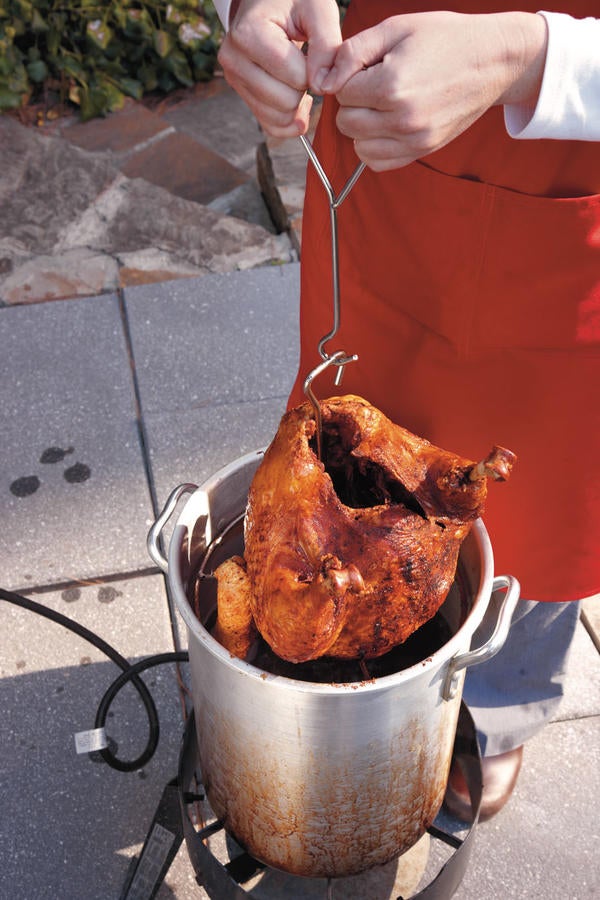
Set up your frying station OUTSIDE on a flat surface, a safe distance from structures and wooden decks. To avoid oil stains, do not place the fryer on top of concrete pavers. Heat the oil to 350° F. You can actually begin heating the oil while preparing the bird, but don’t leave the pot unattended. Hook the lifting tool to the turkey rack and slowly lower the bird into the oil. Cook the turkey about 3 to 4 minutes per pound, until the dark meat has an internal temperature of 175-180° F and the white meat has an internal temp of 165-170° F. It takes about 45-60 minutes to fry a 13-14 lb. turkey. When the turkey is done, slowly lift it from the pot and place it in a pan on paper towels to drain. Let the turkey stand for 15 minutes before carving it.
. . .
